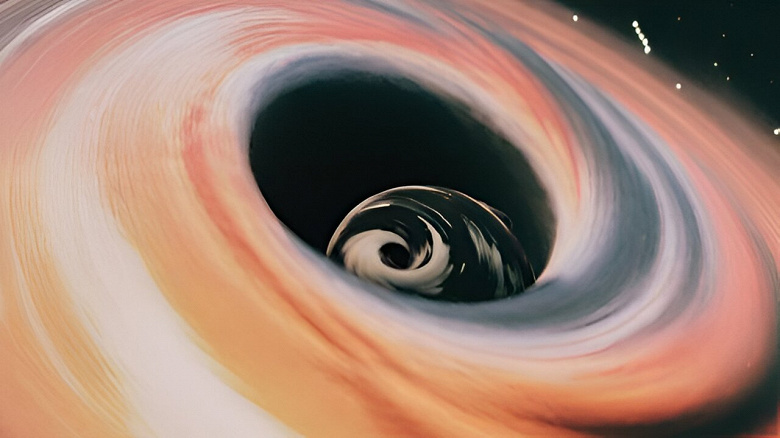Gas accretion and rotation are key to understanding the evolution of galactic centers
Astronomers suspect that at the center of most, if not all, galaxies is a supermassive black hole with a mass millions or even billions of times greater than the mass of our Sun. These colossal objects cannot be formed directly from the collapse of a massive star, as occurs with stellar-mass black holes, since no star is large enough to give rise to such colossal structures.
This means that processes must exist that allow black holes to reach such colossal masses. Accretion of surrounding gas, dust and even stars can contribute to this growth, but the fastest route to increasing mass — these are successive mergers of increasingly larger black holes.
In a paper published in the journal Astroarticle Physics, authors Imre Bartos and Oscar Barrera of the University of Florida describe how «subsidiaries» black holes formed during such mergers can retain information about the merged «parent» black holes.
«We discovered that black holes born from the merger of other black holes carry information about the properties of their "ancestors", including their rotation and mass», — says Bartos. The key novelty in the direction of research — reconstruction of rotation «parent» black holes based on the obtained data on their masses.
Black holes are limited in their characteristics: it is only possible to measure mass, angular momentum (spin) and electric charge. However, according to Bartos, even these few parameters are enough to reconstruct some details of the black hole's origin. For example, high rotation may indicate accretion of surrounding gas or previous mergers of «parent» black holes, while low rotation often accompanies the birth of a black hole during the gravitational collapse of a star.
For their study, Bartos and Barrera used a Bayesian mathematical method, matching the measured properties of a black hole with expected parameters to reconstruct the characteristics of its «parent» objects. The work is highly relevant as physicists increasingly use gravitational waves to study black hole collisions and mergers.
«Recent observations of black hole mergers hint that "assembly lines" Black holes, where several objects merge in succession, may be a common phenomenon in the Universe. This raises the question of how we can reconstruct the properties of ancient black holes based on measurements of their descendants. I am fascinated by this detective story of uncovering the past of space objects and discovering the legacy of previous generations», — notes Bartos.

